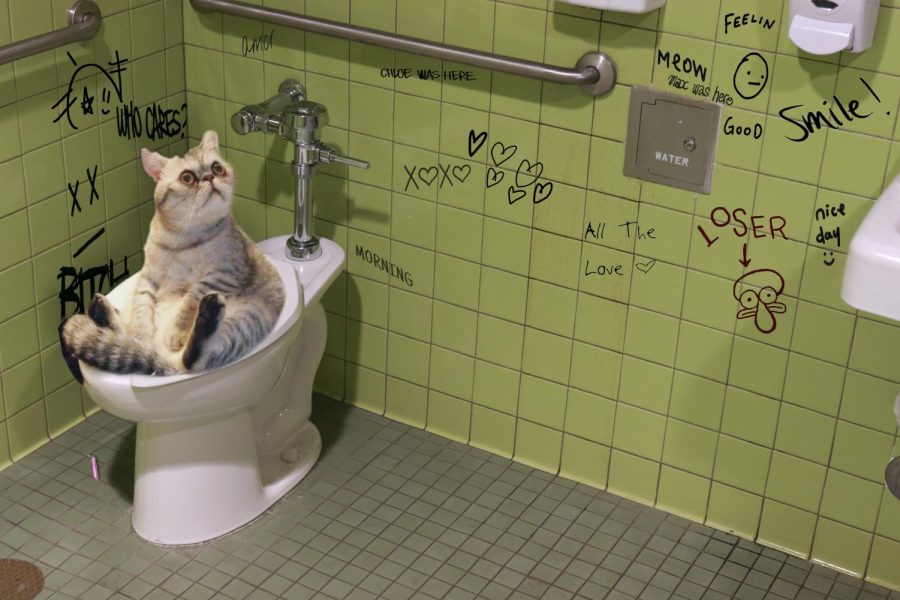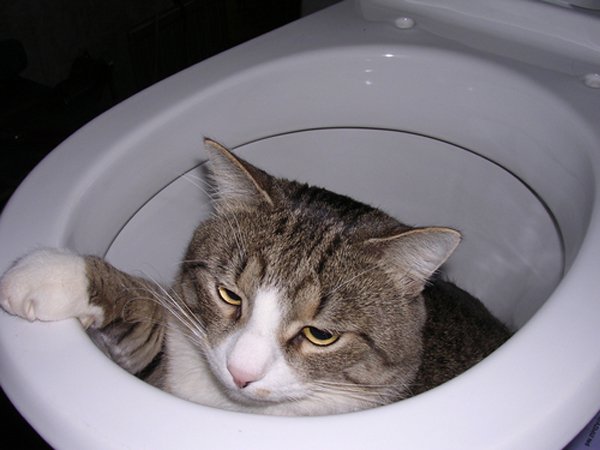Prevent Bathroom Emergencies: Don't Flush Cat Poop Down Your Toilet - Expert Guidance
Prevent Bathroom Emergencies: Don't Flush Cat Poop Down Your Toilet - Expert Guidance
Blog Article
How do you really feel on the subject of How to Dispose of Cat Poop and Litter Without Plastic Bags?

Introduction
As cat proprietors, it's important to be mindful of how we dispose of our feline close friends' waste. While it might seem hassle-free to flush pet cat poop down the bathroom, this method can have detrimental consequences for both the setting and human health and wellness.
Ecological Impact
Purging cat poop presents dangerous pathogens and parasites right into the supply of water, presenting a significant danger to water ecosystems. These contaminants can negatively affect aquatic life and compromise water quality.
Health and wellness Risks
In addition to environmental worries, purging feline waste can likewise present wellness threats to human beings. Feline feces may contain Toxoplasma gondii, a parasite that can create toxoplasmosis-- a possibly extreme ailment, specifically for expectant females and individuals with weakened immune systems.
Alternatives to Flushing
Thankfully, there are safer and extra responsible methods to take care of pet cat poop. Take into consideration the adhering to options:
1. Scoop and Dispose in Trash
The most typical approach of throwing away cat poop is to scoop it into an eco-friendly bag and toss it in the garbage. Make sure to use a specialized litter scoop and dispose of the waste without delay.
2. Use Biodegradable Litter
Go with naturally degradable pet cat litter made from products such as corn or wheat. These litters are environmentally friendly and can be securely gotten rid of in the garbage.
3. Bury in the Yard
If you have a lawn, take into consideration hiding cat waste in an assigned location far from vegetable gardens and water sources. Make sure to dig deep adequate to stop contamination of groundwater.
4. Install a Pet Waste Disposal System
Invest in an animal waste disposal system particularly created for pet cat waste. These systems make use of enzymes to break down the waste, lowering smell and ecological influence.
Verdict
Liable pet dog possession prolongs past offering food and shelter-- it also involves correct waste monitoring. By avoiding flushing cat poop down the commode and selecting alternate disposal methods, we can minimize our environmental impact and safeguard human health and wellness.
Why Can’t I Flush Cat Poop?
It Spreads a Parasite
Cats are frequently infected with a parasite called toxoplasma gondii. The parasite causes an infection called toxoplasmosis. It is usually harmless to cats. The parasite only uses cat poop as a host for its eggs. Otherwise, the cat’s immune system usually keeps the infection at low enough levels to maintain its own health. But it does not stop the develop of eggs. These eggs are tiny and surprisingly tough. They may survive for a year before they begin to grow. But that’s the problem.
Our wastewater system is not designed to deal with toxoplasmosis eggs. Instead, most eggs will flush from your toilet into sewers and wastewater management plants. After the sewage is treated for many other harmful things in it, it is typically released into local rivers, lakes, or oceans. Here, the toxoplasmosis eggs can find new hosts, including starfish, crabs, otters, and many other wildlife. For many, this is a significant risk to their health. Toxoplasmosis can also end up infecting water sources that are important for agriculture, which means our deer, pigs, and sheep can get infected too.
Is There Risk to Humans?
There can be a risk to human life from flushing cat poop down the toilet. If you do so, the parasites from your cat’s poop can end up in shellfish, game animals, or livestock. If this meat is then served raw or undercooked, the people who eat it can get sick.
In fact, according to the CDC, 40 million people in the United States are infected with toxoplasma gondii. They get it from exposure to infected seafood, or from some kind of cat poop contamination, like drinking from a stream that is contaminated or touching anything that has come into contact with cat poop. That includes just cleaning a cat litter box.
Most people who get infected with these parasites will not develop any symptoms. However, for pregnant women or for those with compromised immune systems, the parasite can cause severe health problems.
How to Handle Cat Poop
The best way to handle cat poop is actually to clean the box more often. The eggs that the parasite sheds will not become active until one to five days after the cat poops. That means that if you clean daily, you’re much less likely to come into direct contact with infectious eggs.
That said, always dispose of cat poop in the garbage and not down the toilet. Wash your hands before and after you clean the litter box, and bring the bag of poop right outside to your garbage bins.
https://trenchlesssolutionsusa.com/why-cant-i-flush-cat-poop/

As a serious reader on Can You Flush Cat Poop Down The Toilet?, I thought sharing that short article was a smart idea. Sharing is nice. Helping people is fun. Bless you for your time. Please stop by our site back soon.
Visit Website Report this page